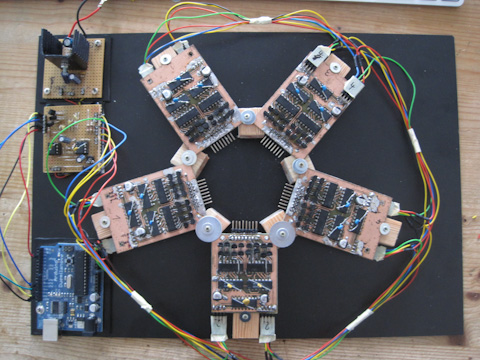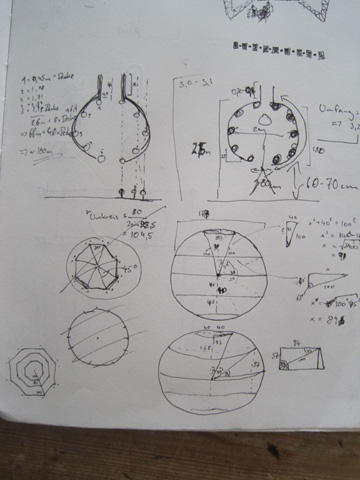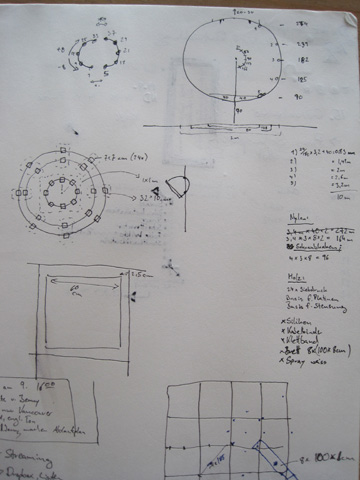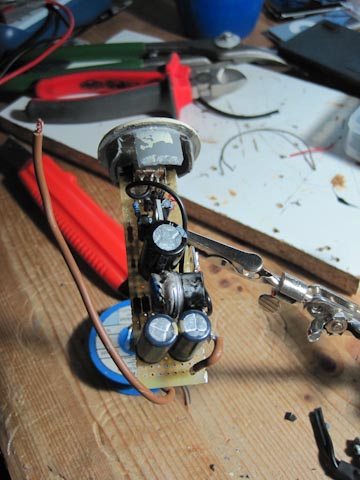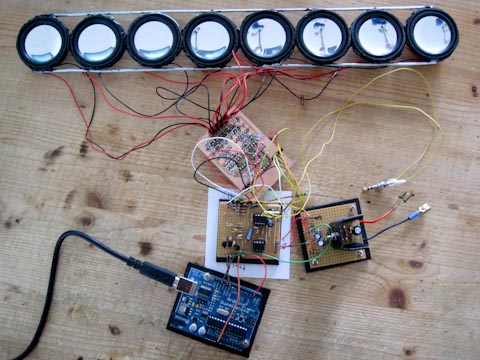After my first experiences with the [Diskokugel] circuit building [Audioweb] and [AudioSphere] I tried to optimize the circuit for further use. That means I tried to look for a way to get some head room with the volume, since the current design didn’t quite satisfy me volumewise. I discussed the problem with Christian and we did some experiments using a [TDA7053a]. Not only would the TDA make a higher amplification available. Working on 5V instead of +/- 5v, as the transistor circuit works right now, it would have rid us of one power line that has to be transferred into the turning ball via a sliding contact. Also, soldering two chips on the board would have been much faster than soldering those 16 transistors.
The TDA7053 has a DC volume control input, which made us hope that we would simply connect it directly to the 4094 register to switch it on and off, making the 4066 switch obsolete. Unfortunately that didn’t work. The 7053’s offset voltage rises with the applied control voltage, thus producing a crack at the output when raised rapidly. Ultimately we got the thing working by keeping the control voltage at ~0.7V and switching the audio signal on and off with the 4066. However, since in this version all amps are constantly active, I am afraid the whole system would be prone to interferences and the power consumption would be very high. I had a very hard time testing the whole setup. I don’t know if it was my breadboard or whatever, but something started oscillating regularly and there was never a setup tat was save from that or other interferences. Christian told me however that he got something working.
I am not sure how to proceed yet. I think I will stay with the old circuit for now and see how far it takes me. After all, one result of the experiments with the TDA was that a higher volume makes it harder to locate the source of the signal. That would be sort of counter productive. It also shows that there are possibly limits to the use of this whole technique…



